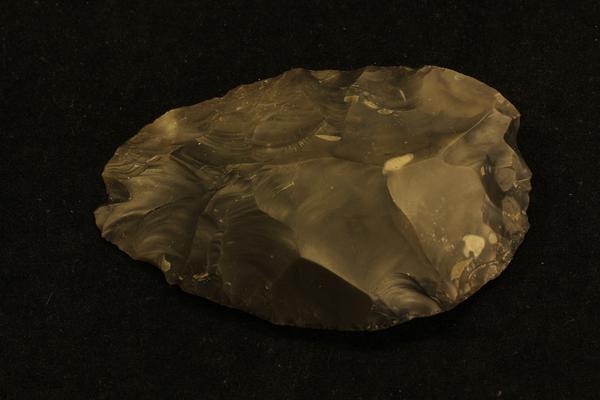worked flint
Accession Number NWHCM : 2010.7.40416
Description
worked flint from Lynford Quarry, HER 37095, small find 40416 (mount is stored with object)
Read Moreworked flint
The site of Lynford is one of the best preserved late Middle Palaeolithic sites in Britain. This now represents the most important Neanderthal site in the whole of the British Isles. Lynford is situated in Thetford Forest, where a group of gravel pits are located on a flood plain terrace on the south bank of the River Wissey. In 2002 archaeological investigation revealed evidence of early human activity in direct association with mammoth bones. Black flint handaxes were found within the same layer of sediment. Significantly, these axes were of the bout coupe form, which directly associated them with the presence of Neanderthals. Optical Stimulated Luminescence analysis has dated the site to around 65,000 years ago, approximately 30,000 years before the arrival of modern humans to Britain. It was located by an area of stagnant water surrounded by marshes, adjacent to a large river where game animals and their predators had come to drink. Plant and insect remains show that the Neanderthals were living at Lynford during a cold climate phase, within a barren and open landscape. The remains of at least nine Woolly Mammoths are evidence for this having been the only recorded mammoth butchery site in Britain.





